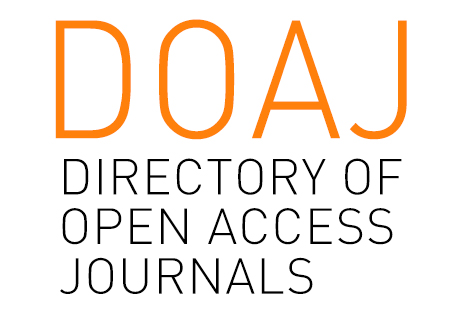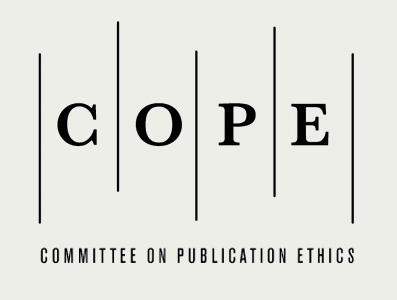Does Gender Shape AI Adoption? Evidence from Serbian Primary and Secondary School Teachers
Milena Z. Škobo, Sinergija University, Faculty of Philology, Bijeljina, Republic of Srpska, Bosnia and Herzegovina, e-mail: mskobo@sinergija.edu.ba
Milena V. Šović, University Business Academy Faculty of Economics and Engineering Management, Novi Sad, Serbia
Иновације у настави, XXXVIII, 2025/3, стр. 113–129
| PDF | | Extended summary PDF |
DOI: 10.5937/inovacije2503113S
Summary: This paper explores whether gender influences Serbian primary and secondary school teachers’ perspectives on AI adoption. Using a quantitative approach, data were collected from 135 teachers across Serbia. Cronbach’s Alpha assessed internal consistency, while Mann-Whitney U tests and Spearman’s rank correlation examined gender differences in AI-related attitudes, familiarity, and perceived challenges. No statistically significant correlations emerged, suggesting gender is not a key factor in shaping teachers’ expectations or concerns about AI. Instead, factors like digital literacy, professional development, and institutional support may play a greater role. These findings contribute to the broader discussion on AI in education, offering insights for future research and policy.
Keywords: AI tools, gender differences, teachers’ attitudes, primary and secondary schools, AI adoption in Serbian education
Милена З. Шкобо
Универзитет Синергија, Филолошки факултет,
Бијељина, Република Српска, Босна и Херцеговина
Милена В. Шовић
Универзитет Привредна академија, Факултет за економију и инжењерски менџмент
Нови Сад, Србија
ДА ЛИ РОД ОБЛИКУЈЕ УСВАЈАЊЕ ВЕШТАЧКЕ ИНТЕЛИГЕНЦИЈЕ?
ЕМПИРИЈСКИ НАЛАЗИ ИЗ ОСНОВНИХ И СРЕДЊИХ ШКОЛА У СРБИЈИ
У овом истраживању се испитује да ли род обликује усвајање алата вештачке интелигенције (ВИ) међу наставницима основних и средњих школа у Србији. Рад одговара на уочени недостатак у досадашњој литератури, која је најчешће усмерена на ученике или високообразовни контекст, док се питање родних разлика у наставничким приступима интеграцији ВИ у школама занемарује. Док претходна истраживања често истичу родне неједнакости у дигиталној писмености, самопоуздању и ставовима према технологији, новија истраживања показују да су професионално искуство, институционална подршка и обуке пресуднији од самог рода. Полазећи од тога, циљ овог рада био је да се утврди да ли род и даље представља значајан фактор у обликовању наставничких ставова, познавања и перцепције изазова везаних за примену ВИ у српском образовном систему. Теоријски оквир истраживања заснован је на уједињеној теорији прихватања и употребе технологије (UTAUT) и теорији дифузије иновација (DOI). Обе теорије посматрају род као модерирајућу, а не као одређујућу променљиву. UTAUT модел наглашава очекиване перформансе, напор уложен у употребу, социјални утицај и институционалне услове као примарне покретаче усвајања технологије, док DOI теорија истиче релативну предност, компатибилност, сложеност, могућност за тестирање и уочљивост као кључне одреднице прихватања иновација. Ове теоријске поставке коришћене су у операционализацији усвајања ВИ, које је сагледано кроз три димензије: ставове и очекивања, познавање и искуство, као и перципиране изазове и ризике. Ранија истраживања о родном дигиталном јазу указују на културне стереотипе који мушкарце чвршће повезују са технологијом, док новија истраживања све чешће показују да жене испољавају веће интересовање за стручно усавршавање у области ВИ. Српски образовни систем, у којем већинску наставничку популацију чине жене и у којем родне разлике нису довољно проучене, пружа посебно погодан оквир за преиспитивање ових претпоставки. Истраживање је спроведено квантитативном методом, уз примену онлајн-упитника који је у јануару 2025. попунило 135 наставника из градских, приградских и руралних школа. Инструмент је садржао 26 питања, укључујући социодемографске податке и 18 тврдњи о ставовима према ВИ. Одговори су мерени петостепеном Ликертовом скалом, а факторском анализом издвојене су три димензије: ставови и очекивања, познавање и искуство, као и перципирани изазови и ризици. Поузданост скала потврђена је Кронбаховим алфа коефицијентом. За статистичку обраду коришћени су Ман–Витнијев У тест и Спирманов коефицијент ранговне корелације. Резултати су показали да нема статистички значајних разлика између мушких и женских испитаника у погледу усвајања ВИ. И мушкарци и жене изразили су углавном позитивне ставове, умерено познавање и сигурност у употреби ВИ алата, као и свест о потенцијалним изазовима. Ипак, уочене су мање варијације: жене су у већем проценту подржале корисност ВИ и изразиле нешто већу упознатост, док су мушкарци који су истицали изазове то чинили снажније. Ове разлике, међутим, нису достигле статистичку значајност. Уместо рода, пресудним факторима показали су се дигитална писменост, ресурси, институционална подршка и прилике за стручно усавршавање. Ови налази подударају се са новијим међународним истраживањима која показују да видљива практична корист и наставничко искуство умањују некадашње родне разлике. Педагошке импликације овог истраживања указују на то да се програми за интеграцију ВИ у наставу не би требало усмеравати према роду, већ ка стварању системских услова за подршку наставницима. Како су и мушкарци и жене мотивисани да уведу ВИ онда када препознају јасну наставну вредност, обуке би требало усредсредити на практичне примене у учионици, стицање искуства и ублажавање ризика као што су злоупотреба података или претерано ослањање ученика на технологију. Посебну пажњу треба посветити равномерном приступу између урбаних и руралних школа, јер инфраструктурне разлике могу бити пресудније од демографских фактора. Будући да је ово пилот-истраживање са релативно ограниченим узорком, добијене резултате треба тумачити са опрезом. Ипак, налази доприносе међународној расправи о ВИ у образовању, показујући да у српском контексту род није препрека усвајању. Уместо тога, наглашава се значај искуства, усавршавања и институционалне подршке за наставнике. Будућа истраживања са већим и разноврснијим узорцима, регионална поређења и комбиновање квантитативних и квалитативних метода могла би додатно осветлити динамику усвајања ВИ у школама. Такви подаци биће кључни за креирање политика и пракси које ће омогућити да се ВИ у образовању примењује ефикасно, инклузивно и одрживо.
Кључне речи: алати вештачке интелигенције, родне разлике, ставови наставника, основне и средње школе, усвајање ВИ у српском образовању
References:
- Acilar, A., & Sæbø, Ø. (2023). Towards understanding the gender digital divide: A systematic literature review. Global Knowledge Memory and Communication, 72(3), 233–249.
https://doi.org/10.1108/GKMC-09-2021-0147 - Adžić, S., Tot, T. S., Vukovic, V., Radanov, P., & Avakumović, J. (2024). Understanding Student Attitudes toward GenAI Tools: A Comparative Study of Serbia and Austria. International Journal of Cognitive Research in Science, Engineering & Education (IJCRSEE), 12(3), 583–611. https://doi.org/10.23947/2334-8496-2024-12-3-583-611
- Alfadda, H. A., & Mahdi, H. S. (2021). Measuring students’ use of zoom application in language course based on the technology acceptance model (TAM). Journal of Psycholinguistic Research, 50(4), 883–900. https://doi.org/10.1007/s10936-020-09752-1
- Bolívar-Cruz, A., & Verano-Tacoronte, D. (2025). Is Anxiety Affecting the Adoption of ChatGPT in University Teaching? A Gender Perspective. Technology, Knowledge and Learning, 1–20. https://doi.org/10.1007/s10758-025-09830-0
- Bucea-Manea-Țoniş, R., Kuleto, V., Gudei, S. C. D., Lianu, C., Lianu, C., Ilić, M. P., & Păun, D. (2022). Artificial intelligence potential in higher education institutions enhanced learning environment in Romania and Serbia. Sustainability, 14(10), 5842. https://doi.org/10.3390/su14105842
- Cabero-Almenara, J., Palacios-Rodríguez, A., Loaiza-Aguirre, M. I., & Rivas-Manzano, M. D. R. D. (2024). Acceptance of educational artificial intelligence by teachers and its relationship with some variables and pedagogical beliefs. Education Sciences, 14(7), 740. https://doi.org/10.3390/educsci14070740
- Cai, Z., Fan, X., & Du, J. (2017). Gender and attitudes toward technology use: A meta-analysis. Computers & Education, 105, 1–13. https://doi.org/10.1016/j.compedu.2016.11.003
- Chiu, T. K., & Chai, C. S. (2020). Sustainable curriculum planning for artificial intelligence education: A selfdetermination theory perspective. Sustainability, 12(14), 5568. https://doi.org/10.3390/su12145568
- Cooper, J. (2006). The digital divide: The special case of gender. Journal of Computer Assisted Learning, 22(5), 320–334. https://doi.org/10.1111/j.1365-2729.2006.00185.x
- Dwivedi, Y. K., Rana, N. P., Jeyaraj, A., Clement, M., & Williams, M. D. (2019). Re-examining the unified theory of acceptance and use of technology (UTAUT): Towards a revised theoretical model. Information Systems Frontiers, 21(3), 719–734. https://doi.org/10.1007/s10796-017-9774-y
- Galindo-Domínguez, H., Delgado, N., Campo, L., & Losada, D. (2024). Relationship between teachers’ digital competence and attitudes towards artificial intelligence in education. International Journal of Educational Research, 126, 102381. https://doi.org/10.1016/j.ijer.2024.102381
- Gjermeni, O. (2024). Likelihood of AI Tools Adoption and Interest in Professional Development Opportunities in Higher Education: An Ordinal Logistic Regression Analysis. The Eurasia Proceedings of Educational and Social Sciences (EPESS), 35, 217–227. https://doi.org/10.55549/epess.817
- Grassini, S. (2023). Shaping the future of education: exploring the potential and consequences of AI and ChatGPT in educational settings. Education Sciences, 13(7), 692. https://doi.org/10.3390/educsci13070692
- Kiwanuka, A. (2015). Acceptance process: The missing link between UTAUT and diffusion of innovation theory. American Journal of Information Systems, 3(2), 40–44. https://doi.org/10.12691/ajis-3-2-3
- Kovačević, A., & Demić, E. (2024). The impact of gender, seniority, knowledge and interest on attitudes to artificial intelligence. IEEE Access, 20(99), 1–10. https://doi.org/10.1109/ACCESS.2024.3454801
- Kuleto, V., Ilic, M., Bucea-Manea-Țoniş, R., Živanović, Z., & Păun, D. (2022). K-12 Modern schools in Serbia: exploratory research regarding teachers genuine knowledge and perception of AI-based opportunities and challenges in education. Journal of Economic Development, Environment and People, 11(2), 5–15. https://doi.org/10.26458/jedep.v11i2.762
- Møgelvang, A., Bjelland, C., Grassini, S., & Ludvigsen, K. (2024). Gender Differences in the Use of Generative Artificial Intelligence Chatbots in Higher Education: Characteristics and Consequences. Education Sciences, 14(12), 1363. https://doi.org/10.3390/educsci14121363
- Nja, C. O., Idiege, K. J., Uwe, U. E., Meremikwu, A. N., Ekon, E. E., Erim, C. M., … & Cornelius-Ukpepi, B. U. (2023). Adoption of artificial intelligence in science teaching: From the vantage point of the African science teachers. Smart Learning Environments, 10(42), 1–7. https://doi.org/10.1186/s40561-023-00261-x
- Ofosu-Ampong K. (2023). Gender Differences in Perception of Artificial Intelligence-Based Tools. JDAH, 4(2), 52–56. https://doi.org/10.33847/2712-8149.4.2_6
- Ružičić, V., Simeunović, M., & Gojgic, N. (2024). Prerequisites for Higher Quality Education: Teachers’ Attitudes on the Application of Artificial Intelligence Tools in Teaching. In 10th International Scientific Conference Technics, Informatics and Education-TIE 2024 (pp. 429–436). Faculty of Technical Sciences Čačak, University of Kragujevac. https://doi.org/10.46793/TIE24.429R
- Rogers, E. M. (1995). Diffusion of innovations. 4th Edition. The Free Press.
- Sahin, I. (2006). Detailed review of Rogers’ diffusion of innovations theory and educational technologyrelated studies based on Rogers’ theory. Turkish Online Journal of Educational Technology, 5(2), 14–23.
- Sindermann, C., Sha, P., Zhou, M., Wernicke, J., Schmitt, H. S., Li, M., … & Montag, C. (2021). Assessing theattitude towards artificial intelligence: Introduction of a short measure in German, Chinese, and English language. KI-Künstliche intelligenz, 35(1), 109–118. https://doi.org/10.1007/s13218-020-00689-0
- Strzelecki, A., & ElArabawy, S. (2024). Investigation of the moderation effect of gender and study level on the acceptance and use of generative AI by higher education students: Comparative evidence from Poland and Egypt. British Journal of Educational Technology, 55(3), 1209–1230. https://doi.org/10.1111/bjet.13425
- Tomić, B. M., & Radovanović, N. D. (2024). The application of artificial intelligence in the context of the educational system in Serbia, with a special focus on religious education. Sociološki pregled, 58(2), 435–459. http://dx.doi.org/10.5937/socpreg58-48911
- Tornatzky, L. G., & Klein, K. J. (1982). Innovation characteristics and innovation adoption-implementation: A meta-analysis of findings. IEEE Transactions on engineering management, (1), 28–45. https://doi.org/10.1109/TEM.1982.6447463
- Venkatesh, V., Morris, M. G., Davis, G. B., & Davis, F. D. (2003). User acceptance of information technology: Toward a unified view. MIS quarterly, 425–478. http://dx.doi.org/10.5937/socpreg58-48911
- Wang, X., Li, L., Tan, S. C., Yang, L., & Lei, J. (2023). Preparing for AI-enhanced education: Conceptualizing and empirically examining teachers’ AI readiness. Computers in Human Behavior, 146, 107798. http://dx.doi.org/10.1016/j.chb.2023.107798
- Wardat, Y., Tashtoush, M., AlAli, R., & Saleh, S. (2024). Artificial intelligence in education: mathematics teachers’ perspectives, practices and challenges. Iraqi Journal for Computer Science and Mathematics, 5(1), 60–77. http://dx.doi.org/10.52866/ijcsm.2024.05.01.004
Copyright © 2025 by the publisher Faculty of Education, University of Belgrade, SERBIA. This is an open access article distributed under the terms of the Creative Commons Attribution License (CC BY 4.0) (https://creativecommons.org/licenses/by/4.0/), which permits unrestricted use, distribution, and reproduction in any medium, provided the original paper is accurately cited.





